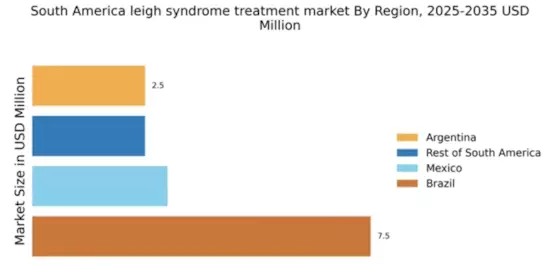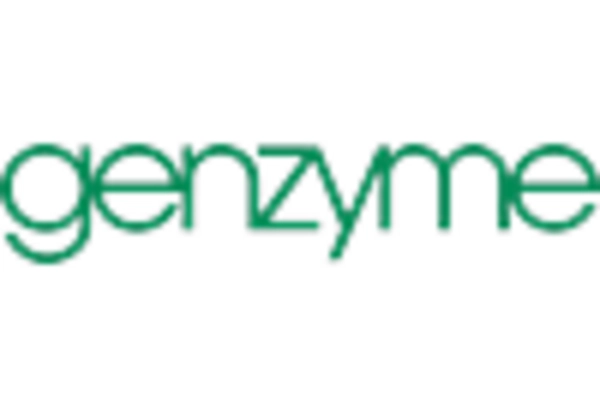Government Initiatives and Funding
Government initiatives aimed at improving healthcare access and funding for rare diseases are significantly influencing the leigh syndrome-treatment market in South America. Various national health programs are being implemented to enhance the diagnosis and treatment of rare genetic disorders, including Leigh syndrome. For instance, increased funding allocations for research and development in the healthcare sector have been observed, with some countries committing millions of $ to support innovative therapies. This financial backing not only encourages pharmaceutical companies to invest in the leigh syndrome-treatment market but also facilitates the establishment of specialized treatment centers, ultimately improving patient outcomes.
Rising Incidence of Leigh Syndrome
The increasing incidence of Leigh syndrome in South America is a critical driver for the leigh syndrome-treatment market. Recent studies indicate that the prevalence of this rare mitochondrial disorder is on the rise, with estimates suggesting that it affects approximately 1 in 40,000 live births in the region. This growing patient population necessitates the development and availability of effective treatment options. As healthcare providers become more aware of the condition, the demand for specialized therapies is likely to increase. Consequently, pharmaceutical companies are focusing on research and development to address this unmet medical need, thereby propelling the leigh syndrome-treatment market forward.
Growing Patient Advocacy and Support Groups
The emergence of patient advocacy and support groups is playing a pivotal role in the leigh syndrome-treatment market. These organizations are dedicated to raising awareness about Leigh syndrome and advocating for better treatment options. They often engage in fundraising activities to support research initiatives and provide resources for affected families. As these groups gain traction, they are likely to influence public policy and healthcare funding decisions, thereby creating a more favorable environment for the development of new therapies. The increased visibility and support for Leigh syndrome may also encourage pharmaceutical companies to invest in the market, ultimately benefiting patients.
Technological Advancements in Treatment Modalities
Technological advancements in treatment modalities are reshaping the leigh syndrome-treatment market in South America. Innovations in gene therapy and personalized medicine are emerging as promising avenues for addressing the underlying causes of Leigh syndrome. Recent developments in CRISPR technology and other gene-editing techniques have shown potential in clinical trials, suggesting that targeted therapies may soon be available. As these technologies become more accessible, healthcare providers are likely to adopt them, leading to a shift in treatment paradigms. This evolution in treatment options could significantly enhance the efficacy of interventions for Leigh syndrome, thereby expanding the market.
Increased Collaboration Among Research Institutions
Increased collaboration among research institutions is fostering advancements in the leigh syndrome-treatment market. Partnerships between universities, hospitals, and biotech companies are becoming more common, facilitating the sharing of knowledge and resources. Such collaborations are essential for accelerating research efforts and clinical trials aimed at developing new therapies. For example, joint initiatives have been established to pool funding and expertise, which may lead to breakthroughs in understanding the genetic basis of Leigh syndrome. This collaborative environment is likely to enhance the overall landscape of treatment options available, thereby benefiting patients and healthcare providers alike.


















Leave a Comment